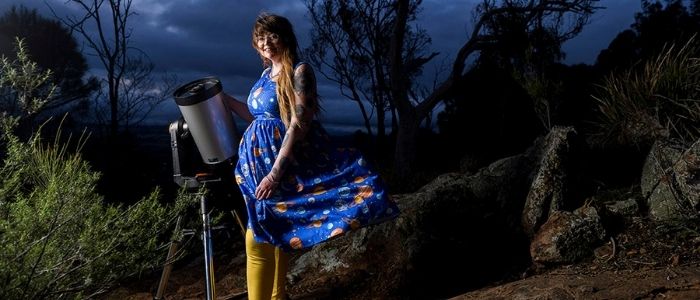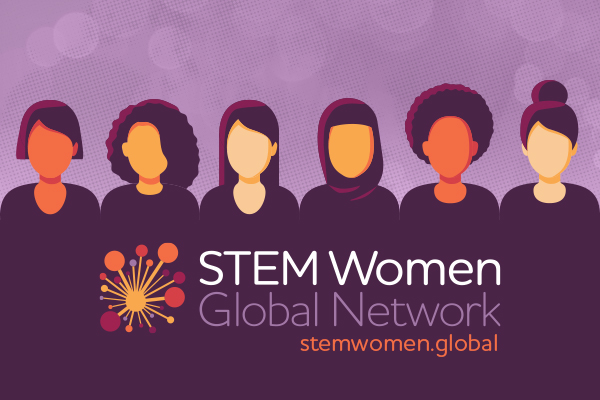In conversation with Karlie Noon

Image credit Rhett Wyman, Sydney Morning Herald
Hi Karlie - thanks for chatting with us!
What drew you into the world of STEM, and to astronomy in particular?
As a kid, I was pretty obsessed with the natural world and found it beautiful. It wasn’t until I was 19 after reading A Brief History of Time by Stephen Hawking that I even knew what physics was. Up until this stage, I had a pretty strong handle on math and became obsessed with learning about the universe so figured I may as well have a go at doing a degree in it. I never thought much more about it, I was just really curious about how everything came to be.
Your research has explored how moon halos were used in traditional Aboriginal and Torres Strait Islander culture to forecast weather. How has this research informed the way you think about astronomy more broadly?
My knowledge of physical processes and traditional knowledge of the land and sky compliment each other beautifully. I couldn’t fully understand or appreciate the complexity of our knowledge systems without having the intuition on how natural environments work, which is something I gained while studying physics. Conversely, my environment wouldn’t be as important to me if it wasn’t for my ancestral and cultural connections to the land and the sky. Both knowledge systems inform me on what is important.
You have just been appointed to the Australian Academy of Science’s National Committee for Astronomy as their first Indigenous consultant. What does it mean for you to have this kind of opportunity at this point in your work-life?
How the astronomy and space industry evolves in this country is incredibly important to all peoples, but particularly Indigenous peoples. The sky is a source of much knowledge about our cultures and about our lands. I am proud to advocate for Indigenous rights and interests in an area that impacts us heavily.
Who are some of your role models?
My Grandma was one of the kindest and caring people I have ever known. She was someone who always advocated for our rights as Aboriginal people and was always so proud of her Gamilaraay heritage and culture. She was one of the first Aboriginal nurses in NSW and used her role within the community to help those most vulnerable, particularly those in our community who found themselves in jail. She taught us how to be proud of our heritage but also how important it is to look out for one another.
Could you share 3 highly recommended reads or podcasts that you think would of interest to colleagues in the STEM Women network?
I am a really big fan of Chandra Prescod-Weinstein’s work, particularly her book The Disordered Cosmos. For anyone interested in Indigenous knowledge of the sky, the book Dark Sparklers by Wardaman elder Bill Yidumduma and Hugh Cairns is a fantastic collection of stories and practical knowledge.
As for podcasts, well I have to mention ABC’s latest season of Cosmic Vertigo. Corey Tutt and I recently took over the reins and created a show full of laughs but also deep yarns about the complexities of the field of astronomy, particularly in the Australian context.
What would be your advice to women and girls considering a career in STEM?
My advice would be to do what excites you. Nothing is easy so you may as well do something that makes your face light up.
Want to be part of a growing STEM Women network? Create a profile to discover opportunities relevant to you.

 Resources and Opportunities
Resources and Opportunities Women in STEM Champions
Women in STEM Champions